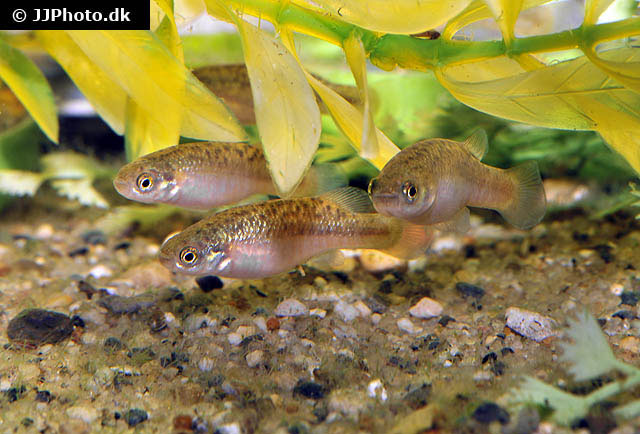| Goodeidae (Splitfins), subfamily: Goodeinae |
| 6 cm TL (male/unsexed) |
|
demersal; freshwater; pH range: 7 - 7.59999990463257; dH range: 5 - 20; depth range 0 - 1 m |
| Central America: Ameca River basin, Jalisco, Mexico. |
|
A small, cone-toothed goodeid characterized with the following: divided preorbital and preopercular sensory canals and trophotaeniae in an elongated rosette; presence of pores 2b-4a in the supraorbital canal system; 12-18 narrow vertical bars along midside; 35-38 vertebrae; compared with A. dugesi more anal-fin rays, modally 14 (vs. 11 or 12
and more diploid chromosomes, 2N = 48 telocentrics and subtelocentrics (vs. 2N = 26 including 22 metacentrics); compared with A. maculata, more dorsal-fin rays, modally 16 (vs. 13 or 14) and in having mandibular pores 4 (vs. 0); compared with A. diazi, A. catarinae and A. meeki, it has fewer preopercular pores modally 8 (vs. 10 or 11), fewer preorbital pores modally 4 (vs. 5), absence of metacentric chromosomes, and a dark band on the male caudal fin (Ref. 58357).,
more dorsal |
| Occurs mainly in shallow water (15-26 cm) underneath floating plants (water hyacinth, filamentous algae and a nasturtium-like plant) along the gradually sloping north side of the pool. Collected from quiet pool of clear to murky water, with substrate of sand, silt, rocks and boulders (Ref. 58357). |
|
Extinct in the Wild (EW); Date assessed: 07 March 2018 Ref. (130435)
|
| harmless |
Source and more info: www.fishbase.org. For personal, classroom, and other internal use only. Not for publication.

